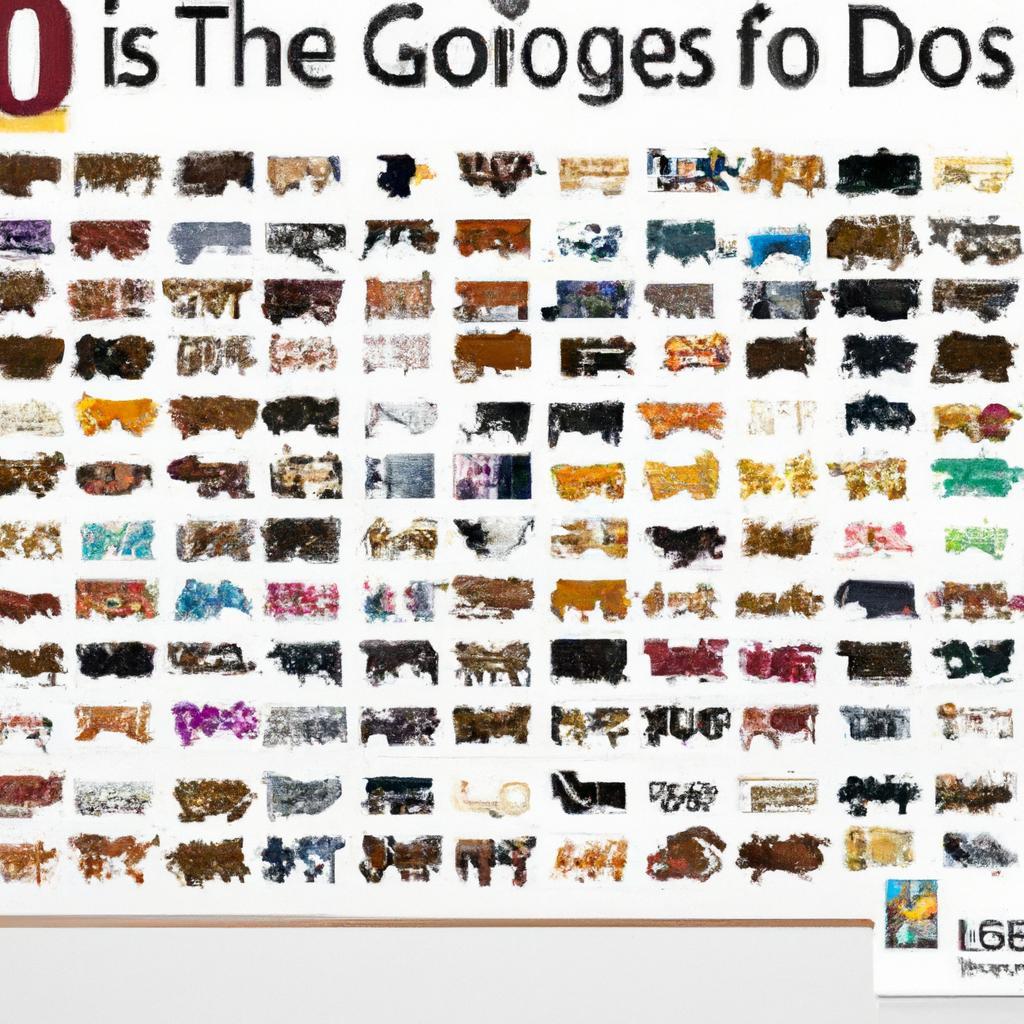Meet Max, a spirited Basenji who embodies independence. Unlike many dogs that thrive on cuddles and snuggles, Max prefers to keep his distance, often perched on the couch, observing the world with a watchful eye. His unique personality challenges the notion that all dogs crave affection. While some may see this as aloofness, it’s simply his way of enjoying companionship on his own terms. If you’re seeking a dog that values personal space, the Basenji might just be the perfect match for your lifestyle. Embrace the uniqueness!
Contents
- Understanding the Nature of Independent Dog Breeds
- Identifying Breeds That Prefer Personal Space
- Creating a Comfortable Environment for Non-Cuddly Dogs
- Building a Strong Bond Without Physical Affection
- Q&A
Understanding the Nature of Independent Dog Breeds
When exploring the characteristics of independent dog breeds, it’s essential to recognize that these dogs often possess a unique blend of traits that set them apart from more affectionate breeds. Independent dogs tend to prioritize their autonomy and may not seek out human companionship in the same way that cuddly breeds do. This independence can manifest in various behaviors, making them less inclined to snuggle up on the couch or seek out physical affection.
Many independent breeds have been developed for specific tasks, such as herding, hunting, or guarding, which influences their temperament. These dogs often exhibit a strong sense of self-reliance and may prefer to explore their environment rather than engage in close physical contact. Some breeds known for their independent nature include:
- Basenji – Known as the “barkless dog,” this breed is often aloof and prefers to do its own thing.
- Shiba Inu – With a spirited personality, Shibas are known for their independence and can be quite reserved.
- Afghan Hound – This elegant breed is often described as dignified and may not seek out cuddles.
- Chow Chow – With a strong-willed nature, Chow Chows can be quite standoffish and prefer their own space.
Understanding the nature of these breeds is crucial for potential dog owners. While they may not be the best choice for those seeking a lap dog, independent breeds can offer a rewarding companionship for individuals who appreciate their unique personalities. These dogs often thrive in environments where they can express their independence, engage in stimulating activities, and form a bond based on mutual respect rather than constant physical affection.
Moreover, independent dogs can teach their owners valuable lessons in patience and understanding. By respecting their need for space and autonomy, owners can cultivate a relationship built on trust and appreciation. This dynamic can lead to a fulfilling partnership where both the dog and owner find joy in their shared experiences, even if those experiences don’t always involve cuddling. Embracing the independent spirit of these breeds can ultimately lead to a deeper connection that transcends traditional notions of companionship.
Identifying Breeds That Prefer Personal Space
When considering a dog that values its personal space, certain breeds stand out due to their independent nature and preference for solitude. These dogs often thrive in environments where they can explore and engage with their surroundings on their own terms. Understanding these breeds can help potential dog owners find a companion that aligns with their lifestyle and expectations.
Some breeds are known for their more reserved demeanor, making them less inclined to seek out constant physical affection. Among these breeds, you might find:
- Basenji: Often referred to as the “barkless dog,” the Basenji is known for its aloofness and independence. They enjoy companionship but prefer to maintain a certain distance.
- Shiba Inu: This breed is famous for its spirited personality and strong-willed nature. Shiba Inus are often content to lounge alone, showcasing their preference for personal space.
- Chow Chow: With their lion-like mane and dignified demeanor, Chow Chows are known for their loyalty but can be quite standoffish, often enjoying their own company.
- Afghan Hound: Renowned for their elegance, Afghan Hounds have a regal air and often prefer to observe rather than engage in constant cuddling.
In addition to these breeds, many others exhibit similar traits. Dogs like the Greyhound and Boston Terrier may also appreciate their personal space, often opting for a cozy spot on the couch rather than a lap to curl up on. These breeds can be affectionate in their own way but are less likely to demand physical closeness.
Choosing a breed that prefers personal space can lead to a harmonious relationship between dog and owner. These dogs often thrive in environments where they can express their independence, allowing for a unique bond that respects each other’s boundaries. By understanding the characteristics of these breeds, potential owners can make informed decisions that align with their lifestyle and preferences.
Creating a Comfortable Environment for Non-Cuddly Dogs
Creating a space that caters to the unique needs of non-cuddly dogs is essential for their well-being. These dogs often prefer to maintain a certain level of independence, so it’s important to design an environment that respects their boundaries while still providing comfort. Start by establishing a cozy area that is solely theirs, such as a designated bed or crate. This space should be equipped with soft bedding and familiar toys, allowing them to retreat when they need some alone time.
**Consider the layout of your home.** Non-cuddly dogs thrive in environments where they can observe their surroundings without feeling overwhelmed. Arrange furniture to create open pathways and vantage points, enabling your dog to feel secure while still being part of the family dynamic. Avoid clutter and loud noises that may cause stress, as a calm atmosphere will encourage your dog to relax and feel at ease.
**Temperature control is also crucial.** Ensure that your dog’s resting area is neither too hot nor too cold. Dogs that prefer their space may be more sensitive to temperature fluctuations, so providing a comfortable climate can make a significant difference. Use blankets or dog-specific heating pads during colder months, and ensure there are shaded areas during the summer to keep them cool.
**Lastly, engage in activities that respect their preferences.** Instead of forcing cuddles, consider interactive toys or puzzle feeders that stimulate their minds and keep them entertained. Regular exercise is also vital; take them for walks or play fetch in a secure area. By focusing on their individual needs and preferences, you can create a nurturing environment that allows your non-cuddly dog to thrive while still feeling loved and secure.
Building a Strong Bond Without Physical Affection
While many dogs thrive on physical affection, there are breeds that prefer to express their love in different ways. Understanding these unique preferences can help you build a strong bond with your furry friend, even without the typical cuddles. By focusing on alternative methods of connection, you can create a fulfilling relationship that respects your dog’s individual personality.
Engaging in interactive activities is a fantastic way to strengthen your bond. Consider the following options:
- Training Sessions: Teaching your dog new commands or tricks not only stimulates their mind but also fosters trust and communication.
- Outdoor Adventures: Taking your dog on hikes or long walks allows them to explore their environment while enjoying your company.
- Playtime: Engaging in games like fetch or tug-of-war can be a great way to connect without the need for physical closeness.
Another effective approach is to focus on verbal communication. Dogs are highly attuned to their owner’s tone and body language. By using positive reinforcement and encouraging words, you can convey affection and support. This method not only helps in building trust but also enhances your dog’s confidence, making them feel secure in your presence.
Lastly, consider creating a comfortable space for your dog that allows them to relax and feel safe. This could be a cozy bed or a designated area where they can retreat when they need their own space. By respecting their boundaries and providing them with a sanctuary, you demonstrate your understanding of their needs, which is a crucial element in fostering a strong, lasting bond.
Q&A
-
Which dog breeds are known for being less affectionate?
Some dog breeds are naturally more independent and less inclined to cuddle. Breeds such as the Basenji, Shiba Inu, and Chow Chow often prefer their personal space and may not seek out physical affection as much as other breeds.
-
Are there specific reasons why some dogs don’t like to cuddle?
Yes, individual temperament, breed characteristics, and past experiences can influence a dog’s desire for physical closeness. Some breeds have been developed for independence and may not have the same instinct to seek out human contact.
-
Can a dog that doesn’t like to cuddle still bond with its owner?
Absolutely! Dogs express affection in various ways. Even if a dog doesn’t enjoy cuddling, it can still form a strong bond through play, training, and companionship. Understanding your dog’s unique way of showing love is key.
-
How can I encourage my non-cuddly dog to be more affectionate?
While you can’t change a dog’s inherent nature, you can foster a closer bond by engaging in activities they enjoy, providing positive reinforcement, and respecting their boundaries. Gradually introducing gentle touch and praise can help them feel more comfortable.
while many dogs thrive on affection, some breeds prefer their space. Understanding these preferences is crucial for potential owners. Choose wisely, and ensure a harmonious relationship that respects your dog’s unique personality.

大家好,我是彼得潘,專業的手法身體治療師。我喜歡探索和研究各種主題,並透過與人工智慧的合作分享專業、實用、有趣的文章。我們定期進行人工審核,以確保內容的準確性。如果您發現文章中有任何不準確的地方,請隨時與我們聯繫,我們會及時糾正。您可以透過 [email protected] 與我們聯繫。



